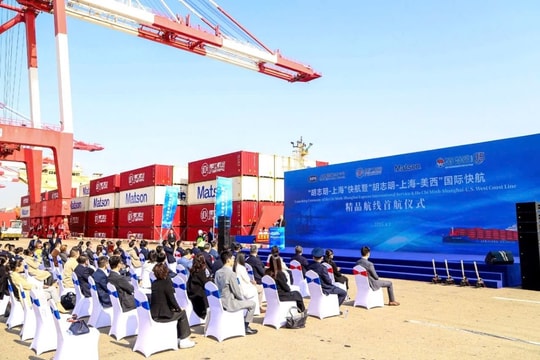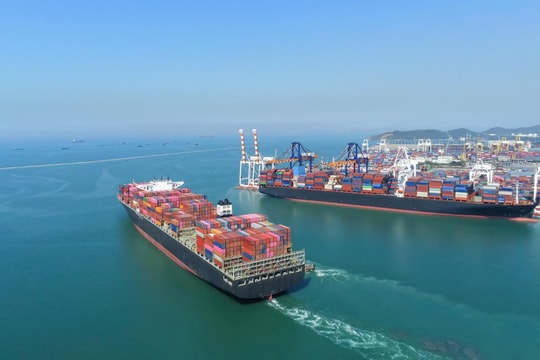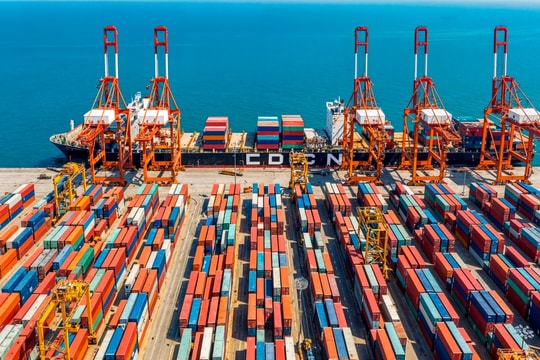
This is not only a direct blow to bilateral trade but also a strong warning to economies heavily dependent on the U.S. market. Behind what appears to be a technical policy lies a complex geopolitical strategy that Vietnam needs to understand thoroughly in order to respond appropriately.
Details and Impacts of the New Tariff on Vietnam
The 46% tariff applied to Vietnam is not the result of arbitrary assessment, but is based on a formula published by the U.S. Department of the Treasury: divide the bilateral trade deficit by the total export value from that country to the U.S., then halve the result. For Vietnam, exports to the U.S. in 2024 reached USD 136.6 billion, while imports from the U.S. were only USD 13.1 billion, resulting in a deficit of USD 123.5 billion—or 90%. Thus, the 46% tariff is considered “half of the imbalance.” The U.S. government calls this a “friendly tariff,” implying that it could go higher if negotiations fail.
Broad impacts on Vietnam’s economy: Previously, U.S. tariffs on Vietnam were mostly sectoral, affecting only specific industries such as steel, shrimp, or plywood. However, the new policy is comprehensive, affecting all types of goods from electronics and textiles to agricultural products. This will raise export costs, reduce competitiveness, and may force many businesses to scale back or shift markets. Foreign-invested enterprises (FDIs) like Samsung or Intel may also reconsider their production strategies in Vietnam if costs rise significantly.
Vietnam’s Response and Countermeasures
Proactive diplomatic and trade actions: Even before the policy was officially announced, Vietnam had taken a series of steps to ease tensions: reducing import tariffs on U.S. goods, opening its market to tech companies like SpaceX, and signing multi-billion-dollar trade deals. These actions were seen as goodwill gestures to improve the trade balance and avoid being put on a “blacklist.” However, the new tariff indicates that unilateral efforts alone are insufficient to shift U.S. policy.
Strategic negotiation and response: As the 46% tariff is scheduled to take effect on April 9, Vietnam is urgently dispatching a delegation to the U.S. for negotiations. Simultaneously, relevant agencies and the business community have begun emergency meetings to discuss response scenarios—from shifting export markets to the EU and Japan to restructuring supply chains. Major enterprises have also proposed establishing direct dialogue mechanisms between businesses from both countries to foster mutual understanding and prevent broader trade conflicts.

Comparison with Other Countries and Negotiation Outlook
Overview of the U.S. tariff policy: Vietnam is not the only country facing high tariffs. The same list includes Cambodia (49%), Laos (48%), Indonesia (32%), China (34%), South Korea (25%), and Japan (24%). These rates reflect not only trade balances but also political, security, and technological factors. Notably, close allies like Japan, South Korea, and the EU are not exempted—indicating this is a systemic policy rather than a case-by-case decision.
Negotiation prospects and key factors: President Trump has stated that the current tariff is just “phase one,” leaving room for bilateral negotiations. This opens a window for Vietnam to offer specific commitments on market access, exchange rate policies, or increasing imports from the U.S. However, there’s a clear risk: if negotiations fail, the U.S. could double the current rate. Hence, Vietnam’s negotiation strategy must be carefully prepared, involving both the government and private sector stakeholders.
A Turning Point in Vietnam–U.S. Trade Relations: Lessons to Learn
The 46% tariff imposed by the U.S. on Vietnamese goods is a clear sign that the era of “immunity” from trade actions is over. For Vietnam, it’s a wake-up call—showing that growth based solely on export surpluses is increasingly questioned amid rising protectionism and geopolitical competition.
Rather than focusing solely on seeking tariff relief, Vietnam must restructure its economic development strategy toward a more balanced model: diversifying export markets, enhancing domestic value-added, boosting domestic consumption, and improving the investment environment to retain and attract high-quality FDI. At the same time, building strategic negotiation capacity and strengthening coordination between the private and public sectors will become crucial.
Ultimately, this is not just a battle between two governments—it is a test of the entire system’s resilience, from ministries and industry associations to individual enterprises. If Vietnam overcomes this challenge, it will not only safeguard its export position in the U.S. but also affirm its role as a resilient, flexible, and responsible trade partner in the evolving global supply chain.











.png)












